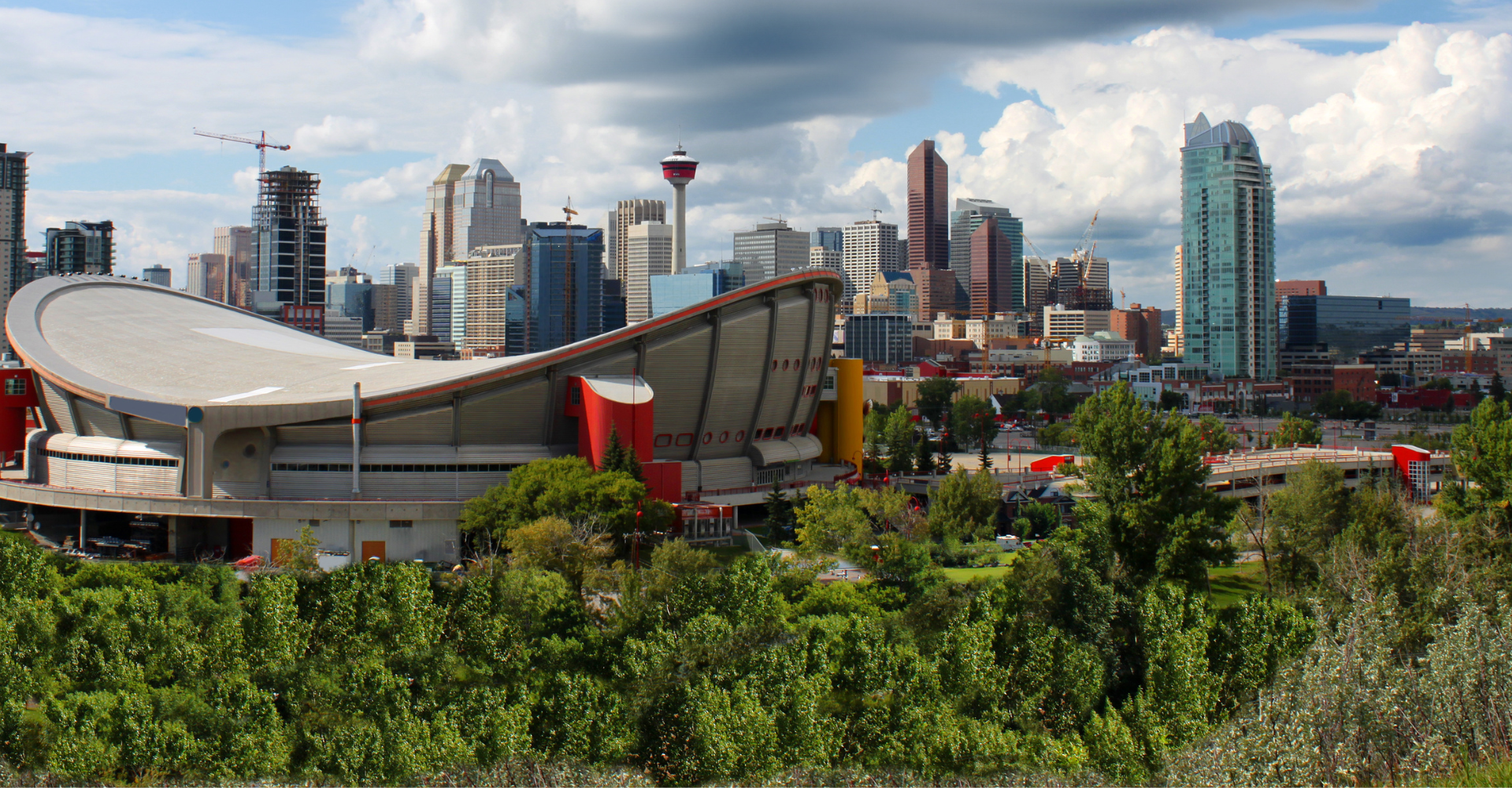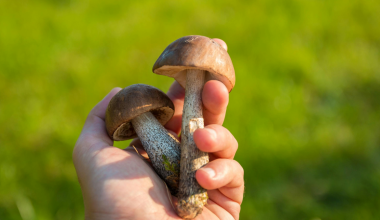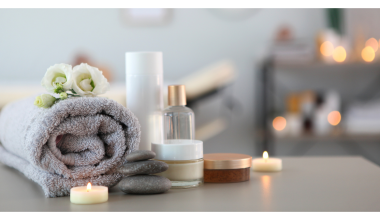Concrete and steel dominate urban centres around the world, and it is easy to forget the profound impact that nature has on our health. As the urban landscape changes and the pressures of modern living grow, ensuring blue (water) and green (vegetation) spaces are prioritized is crucial to our well-being. Access to parks, gardens, ravines, ponds, lakes and other outdoor spaces is an important part of urban life, not because they add beauty and nature but because they help our health.
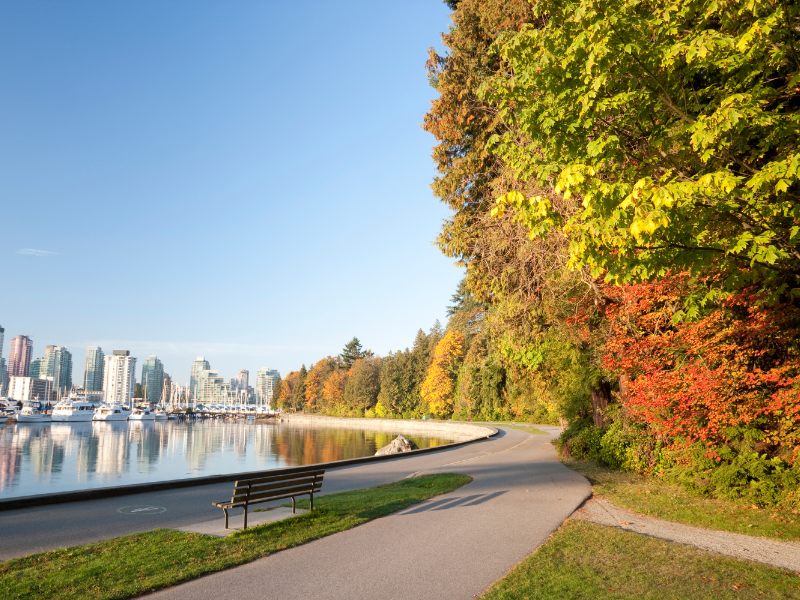
Over 80% of Canadians live in urban areas; that’s 31,863,601 in 2024. As our cities grow, planners must pay attention to preserving or creating blue and green spaces.
The connection between nature and human health isn’t a new notion, but as urban sprawl continues and populations increase in the country’s largest cities, the importance of these blue and green spaces to our mental, physical, and emotional well-being is fundamental.
What are Blue and Green Spaces?
According to Public Health Canada, green and blue spaces refer to a variety of public or private spaces that can be natural spaces, open spaces, or engineered spaces. These spaces can include:
- Trails
- Community gardens
- School grounds
- Shorelines
- Ravines
- Gardens
- Green Walls
- Ponds
- Rivers
- Other outdoor spaces
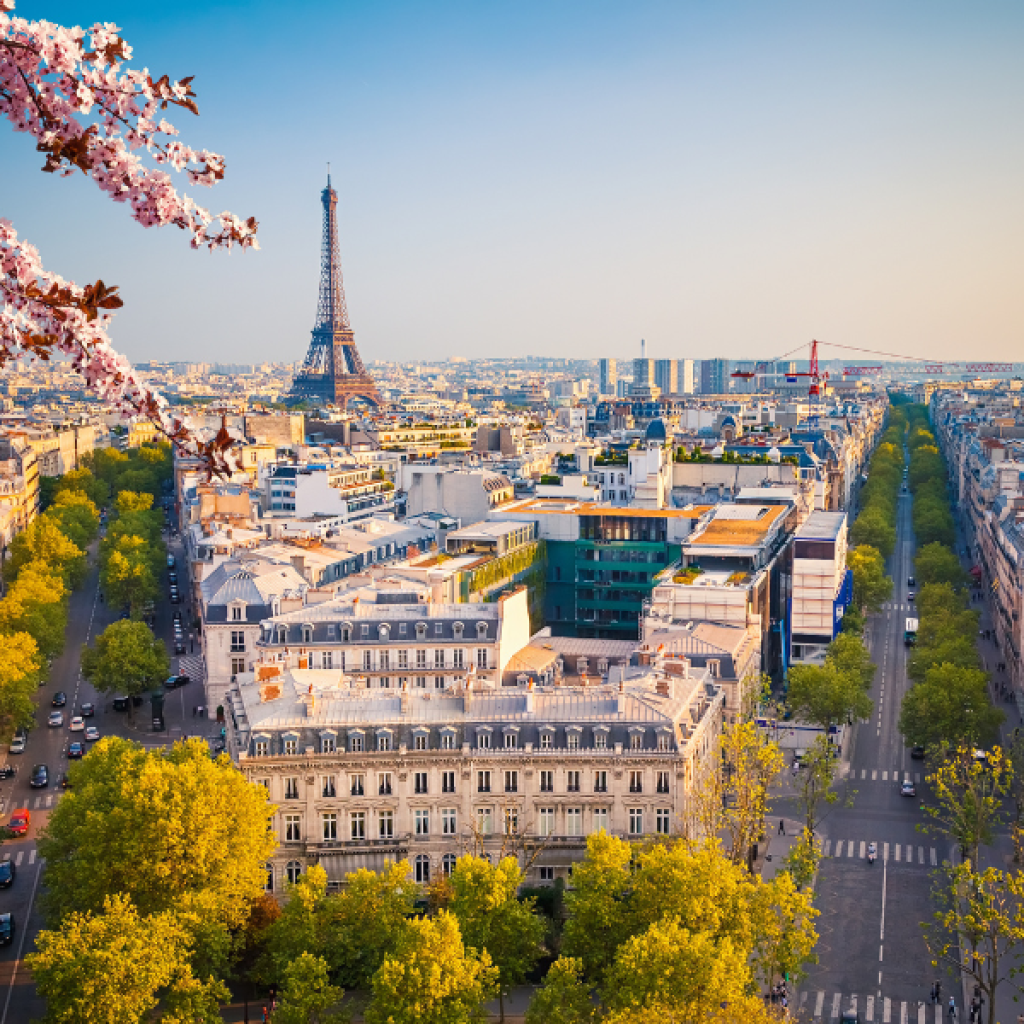
Did You Know?
Cities like Paris, Seattle, Glasgow, Istanbul, Curitiba, Yangzhou, Kanazawa, Barranquilla, Iloilo, Cape Town and Toronto serve as role models in the UN’s Generation Restoration program that is working with 8 cities globally in supporting urban ecosystem initiatives.
Impact of Green and Blue Spaces
Living in the heartbeat of the city means you’re close to employment, shopping, arts, entertainment, and culture. It can be dynamic, a constant whirl, busy with lights, motion and hum of traffic. But it can also be isolating, stressful, and draining. This can lead to depression, anxiety, and other health problems such as heart disease and cognitive decline. Green and blue spaces can heal our emotional, mental, and physical selves. No one wants to live in a concrete world, void of colour, foliage, water and places to connect.
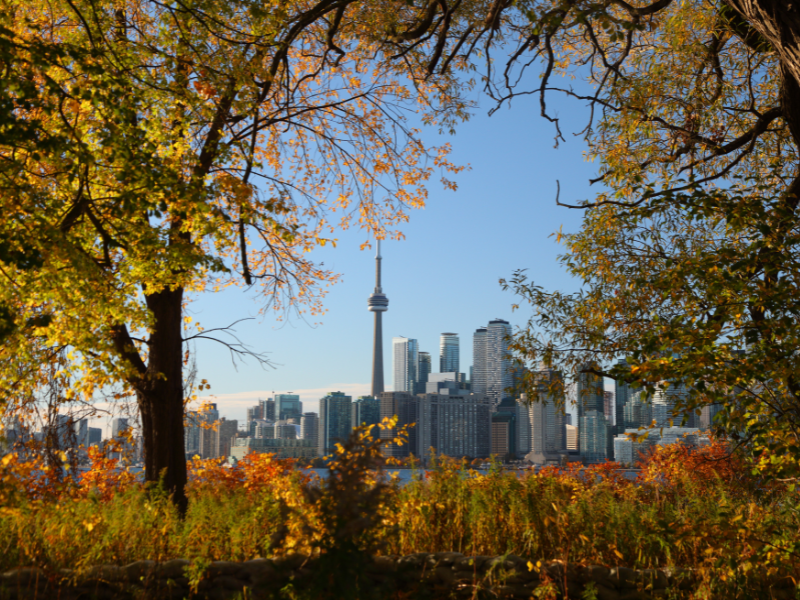
When I lived in a condo, my refuge was the green and blue spaces around the city, for my well-being and my children’s. These spaces breathed life into us. We ran, played, explored, and enjoyed being part of a living organism versus the inanimate landscape of our condo.
Today, I live in a part of the city where the five-minute drive to the highway can take 30 minutes. My retreat is the urban oasis I created in my yard, complete with a water feature and foliage that helps me recharge away from the din of city living. When I feel like moving, I make my way to a nearby 10 km trail covered with mature trees, gravel paths, and some benign wildlife that takes me along the city’s busiest corridor without one reminder of being smack dab in an urban centre.
Green and blues spaces promote and maintain quality of life by:
- Encouragement of Physical Activity. Blue and green space promotes walking, jogging, cycling, and playing sports. Some parks are being built with functionality in mind, with structures that resemble gym equipment. The presence of green space near downtown centres encourages higher levels of activity. The boardwalk along Toronto’s waterfront is regularly filled with runners, walkers, rollerbladers, and cyclists.
Staying physically active helps prevent chronic diseases such as cardiovascular disease and diabetes, and the green spaces provide safe areas for activity. During the pandemic, these green spaces helped with mobility for residents without sufficient space or yards to move around in. Green spaces also support “active commuting”, such as walking, cycling, or skating to work like the Rideau Canal in Ottawa.
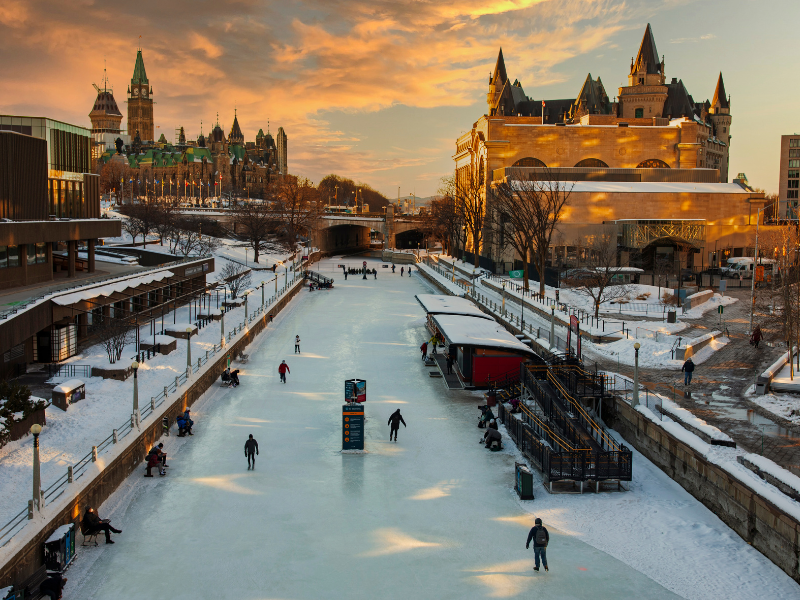
- Improved Air Quality. Take a deep breath in as you explore these spaces in your city. Green spaces help with air pollution in urban areas by absorbing carbon dioxide and releasing oxygen, improving air quality by filtering out pollutants.
- Reduction of Urban Heat Islands. Next time you are feeling the summer sun’s burn, find a nearby green space to help mitigate heat in urban areas. Not only do blue and green spaces benefit our overall well-being, but they also contribute to relieving the urban heat islands caused by pavement and concrete experienced in cities during summer. These green and blue spaces make outdoor areas less suffocating by providing a cooling effect and shade which help decrease heat-related illnesses like heat stroke. The heat emanating from surfaces like roofs, roads, and sidewalks is absorbed, making summer temperatures hotter here than in rural areas. Grass and water reflect sunlight, helping to keep temperatures lower. Green and blue spaces are especially valuable in areas where the summer heat can be repressive.
- Mental Health Benefits: Research has shown that greenspace helps reduce stress, anxiety and depression. These spaces offer a natural setting where you can go and relax. Relaxation helps lower cortisol levels. Not only do green and blue spaces help us relax, but they also elicit feelings of happiness and joy. Moreover, the effect of spending time in nature after an exhausting day has cognitive benefits such as better memory, improved attention, and problem solving. For many people living in urban centres, these pockets provide a reprieve from the rat race. Think of it as forest bathing in the urban jungle.
- Strengthening Social Connections: The idea of a carved-out space connecting people has been around since medieval times. Let’s think about the Italian piazzas that are found in every city and town in Italy; they are a gathering place for the community that fosters camaraderie and connections. Piazzas are paved squares that were used for political, religious, or economic gatherings, and today these spaces, even though not green, are a hub providing opportunities to socialize and keep up on the gossip.
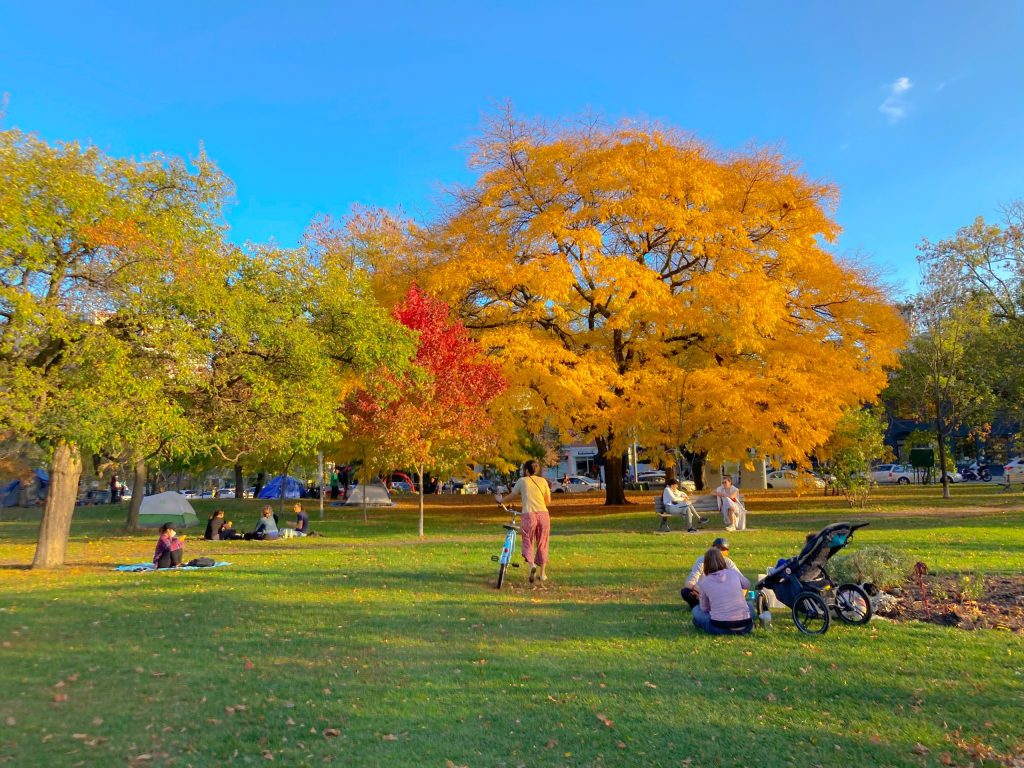
Green space serves as community gathering spots that enhance social interactions and contribute to community pride and a sense of belonging. These spaces allow residents to gather and connect after a long day. Green space serves as a community gathering spot that builds and strengthens community ties. Trinity Bellwoods Park in the heart of Toronto is an excellent example of strengthening community ties, as the surrounding area is densely populated and has little green space.
During Covid-19 we saw the benefits of green and blue spaces. Confinement in homes, feelings of isolation, and restricted mobility contributed to the overall stress many people were experiencing. Individuals used these spaces for fresh air, physical exercise, social interaction (6 feet apart), and a break from the uncertainty of what lay ahead. They helped foster community bonding and underscored the importance of green space as vital to our mental and physical health and resilience.
Green Spaces in Canadian Cities
Ideally, green space should be a close walk from those living in urban centres for convenience and accessibility. Golf courses, school yards, and even beautiful tree-filled cemeteries count as spaces that improve health and well-being. Look around your neighbourhoods for these spaces and trade the concrete for grass or water for a few moments.
You can find some fantastic green spaces across Canada that can help you relax, reset, and reconnect.
Despite Toronto being the largest city in Canada, the city has some beautiful green and blue spaces to enjoy. Cool off at:
- Kay Gardiner Beltline Trail
- Woodbine Beach
- The Toronto Music Garden
- Evergreen Brick Works
- Humber River
In Vancouver, take advantage of nature’s playground at:
- Stanley Park
- The Seawall
- English Bay Beach
- Queen Elizabeth Park
- Jericho Beach Park
A Montreal, rajeunissez-vous à:
- Parc La Fontaine
- Musée des Hospitalières Garden
- Esplanade Tranquille
- Dorchester Square
In Calgary, use the rugged terrain for physical well-being at:
- Bow River
- Rotary Mattamy Greenway
- Central Memorial Park
- Nose Hill Park
In Regina, connect with friends at:
- Westhill Meadow
- Wascana Centre
- Douglas Park Hill
In Winnipeg, escape from the rat race at:
- Red and Assiniboine Rivers
- Bois-des-Esprits
In Halifax, go for a walk or run at:
- Halifax Public Garden
- Halifax Urban Greenway
In St. John’s, make memories with friends at:
- Quidi Vidi Lake
In Charlottetown, slow down and enjoy the beauty at:
- Confederation Trail
In Frederickton, get your step count in at:
- The Green
In the Yukon, NWT, Inuvut, relax in nature at:
- Yukon River Loop Trail
- Somba K’e Park
- Iqaluit Kuunga
Canada has committed to creating six new urban parks by 2025 in Edmonton, Halifax, Saskatoon, Victoria, Windsor and Winnipeg, with an additional nine by 2030. If you live in these cities, look for these new spaces to bring you out of the grey and into the green!
Green and blue spaces contribute to mental, physical, and social health. As our cities become more dense, more concrete, and more rushed, creating places of respite is crucial. While our cities continue to grow, we must balance the grey with the green and blue. A healthy environment is the foundation of a healthy society.
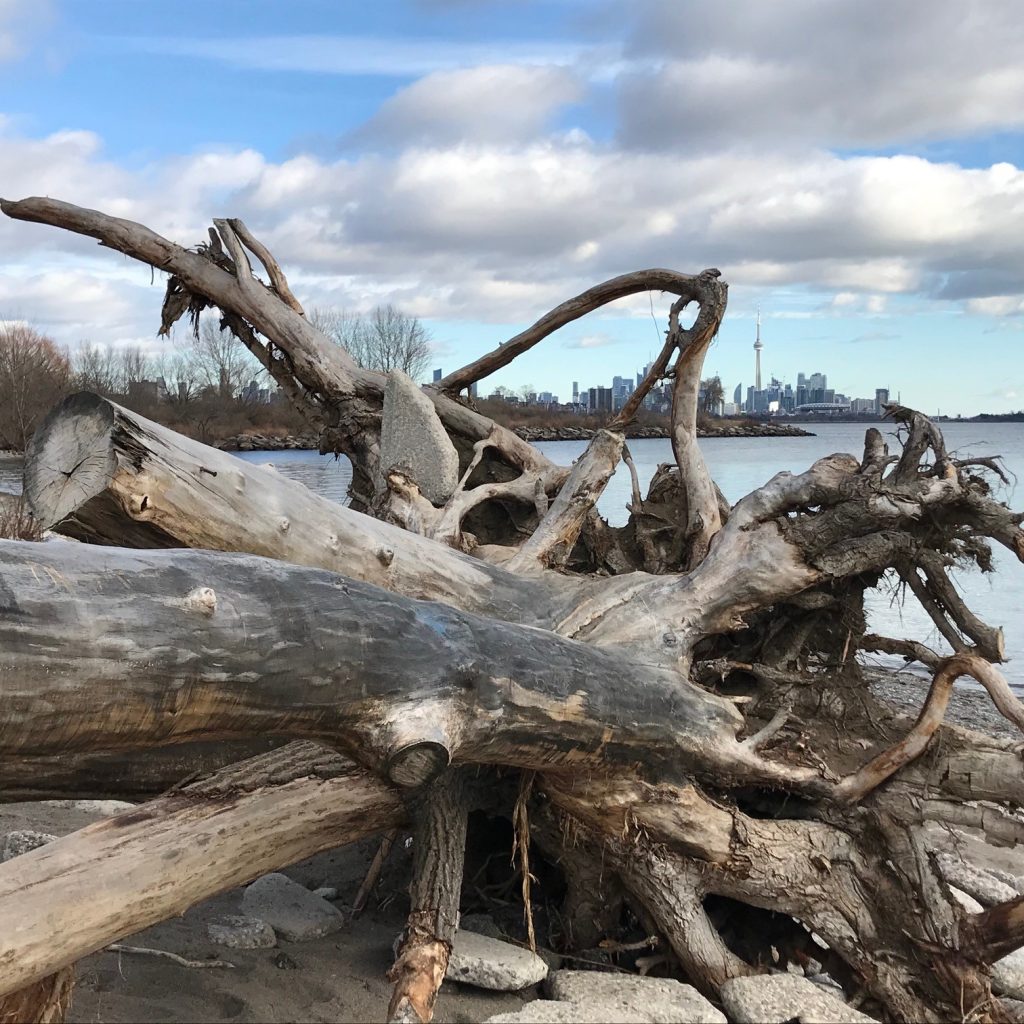
~Read more from The Health Insider~
- There’s a Reason Your Voice May Not Be As Clear as it Can BeFrom dry winters to loud parties, your voice takes a beating. Learn how to protect your “vocal instrument” with these expert tips and SAC guidelines.
- Guilt-Free Indulgence for the Holidays. This is How it’s Done.Enjoy every plate this season! Prep your gut with our low-effort tips: boost hydration, sip digestive tea, and avoid the post-feast crash.
- In-Flight & Holiday Comfort: Essential Gear for Stress-Free TravelFrom travel pillows to compression socks, here are the smartest comfort tools to stay rested and stress-free on flights and holiday visits.
- Struggling With the Time Change? Here’s How to Get Back on TrackLosing or gaining an hour can mess with your energy, mood, and sleep. Here’s how to help your body adjust naturally to the time change.
- Vitamin C and Collagen: The Duo Behind Healthy Skin, Strong Joints, and Faster HealingDiscover how vitamin C fuels collagen production to support healthy skin, strong joints, and tissue repair.
- The Student Stress Reset: 7 Quick Fixes Backed by Science & Student InterviewsDon’t let deadlines crush you. Learn 7 low-effort stress resets, including the 2:4 Pursed-Lip Breathing technique, you can do anywhere!
The information provided on TheHealthInsider.ca is for educational purposes only and does not substitute for professional medical advice. TheHealthInsider.ca advises consulting a medical professional or healthcare provider when seeking medical advice, diagnoses, or treatment. To read about our editorial review process click here.

